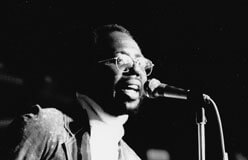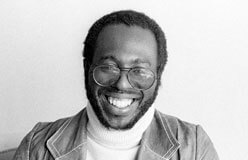You may have heard the phrase, “Never say die.” It’s the title of a song, a film, and a poem. It’s the name of a recording company. It’s also a saying that dates back to English author Charles Dickens in the 1830s.
The expression is used to encourage someone to never give up no matter what, to keep on trying no matter how many things may go wrong. It’s an expression that Curtis Lee Mayfield certainly lived by. Mayfield was a musician who didn’t let a difficult childhood stop him from following his dreams, and who powered through a catastrophic accident to keep on working. . . but we’re getting ahead of ourselves. Let’s start at the beginning.



